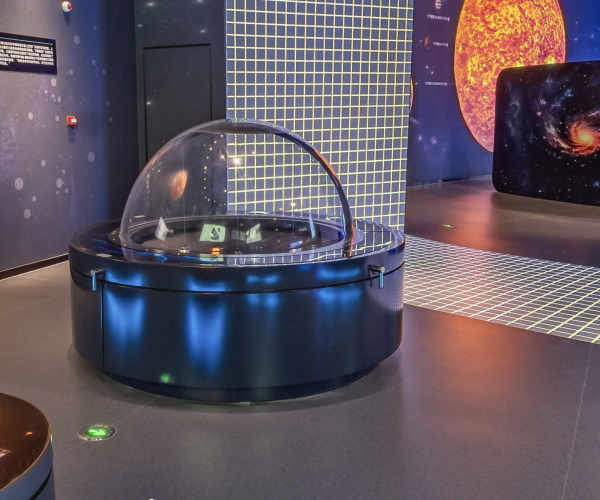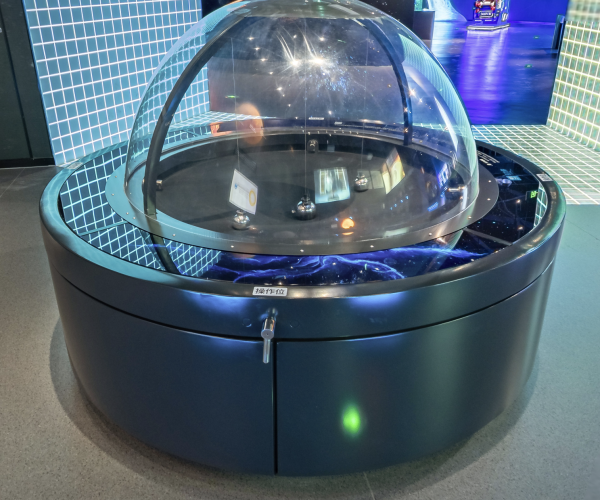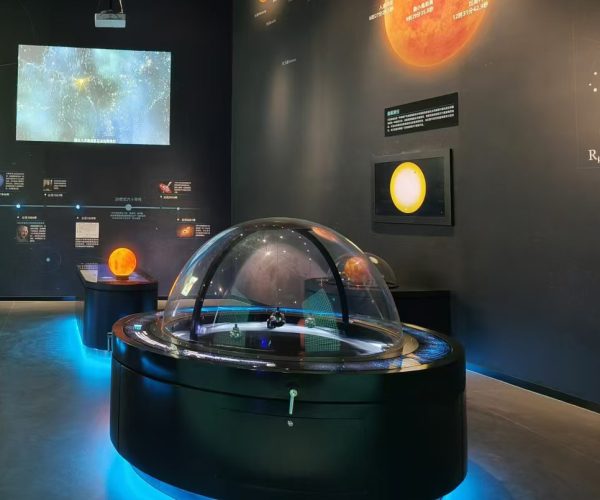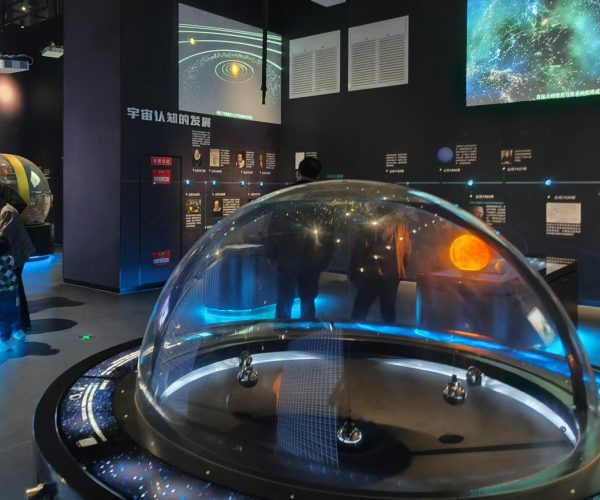



Gravity Trap Exhibit
In the Gravity Trap exhibit, visitors actively engage with the mysteries of space by releasing balls representing model celestial bodies into a simulated cosmic environment. By turning a handle, they release these celestial bodies and watch as they descend into the flexible fabric representing the model space, interacting with others already in motion. Visitors can observe the gravitational influences and unique orbital paths that result from these interactions, showcasing the fascinating complexity of celestial motion.
Visitor Experience
By turning the handle of the gravity trap exhibit, visitors set their celestial bodies in motion, releasing them into the model space. They can then observe how these bodies follow complex trajectories, orbiting around each other and displaying the forces of gravity at work. Each release creates a different interaction, visually illustrating celestial orbits and gravitational pulls. This immersive experience offers a dynamic demonstration of how celestial bodies behave in space, providing a captivating and educational way for visitors to explore the science behind gravitational dynamics.
Lessons Learned by Gravity Trap
- Gravitational Forces in Action: Visitors gain a deeper understanding of the role gravity plays in shaping the motion and interaction of celestial bodies. Through hands-on experimentation, they can see how mass and distance affect gravitational pull and orbits.
- Orbital Dynamics: The exhibit visually demonstrates the principles of orbital mechanics, allowing visitors to observe firsthand how objects in space move under the influence of gravitational forces and interact with one another.
- Scientific Inquiry: Encouraging visitors to experiment with different releases of celestial bodies fosters curiosity and a scientific mindset, as they are inspired to question and learn about the phenomena they observe.
- Physics in Motion: The exhibit highlights key concepts from physics, such as momentum, mass, and velocity, showing how these factors contribute to the orbits and trajectories of celestial bodies.
- Hands-On Learning: By engaging in the physical process of turning the handle and releasing the celestial bodies, visitors experience a kinesthetic learning opportunity, helping them internalize complex scientific concepts through direct interaction.
Target Age
- From 4

